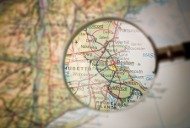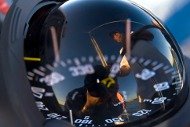Angola

Wars and violent conflicts
| Indicator | Angola |
|---|---|
| Conflict involvement as primary party (2017) | 1 (1 x intra-state) |
| Conflict involvement as supporting party | - |
| Number of victims of war as per 100,000 inhabitants | 0.09 |
| Number of violent conflicts and wars between 1975-2017 | 4 |
| Child soldiers in conflicts | – |
| Victims of sexual violence in wars after 1946 | yes |
| Number of homicides as per 100,000 inhabitants (2015) | 9.6 |
| Number of robberies as per 100,000 inhabitants | – |
| Death penalty (2017) | No death penalty |
| Torture | no known cases |
| Index value Political Terror Scale (2015) | 3 |
| Index value Physical Integrity Rights | 4 |
| Index value political system | -2 |
| Human Development Index (2017) | 0.581 |
| Index value Gini Coefficient (2008) | 42.7 |
| Political participation | restricted |
| Number of politically active ethnic groups (2017) | 1 |
| Number of all ethnic groups (2017) | 5 |
| Ratio of politically active to total number of ethnic groups (2017) | 20 |
| Contested territories | not affected |
Sources:
- Amnesty International (2018)
- Bastick et. al (2007)
- CIRI (2014)
- CSP (2018)
- ETH (2018)
- HKS & PRIO (2016)
- Natural Earth & GAUL (2016)
- PTS (2017)
- Sonderbeauftragter des UN-Generalsekretärs für Kinder und Gewaltkonflikte (2018)
- UCDP (2018)
- UCDP/PRIO (2018)
- UN-Sicherheitsrat (2018)
- UNDP (2018)
- UNODC (2017)
- World Bank (2018)
Detailed information of the used sources can be found in the
list of sources page of this module.
Peace and demobilisation
| Indicator | Angola |
|---|---|
| Times of Peace ( 1975 - 2017 ) [%] | 25.58 |
| Current UN missions | – |
| Peace missions of other actors | – |
| Number of German personnel in missions | – |
| Personnel made available for UN operations | – |
| Number of Blue Helmets per 10,000 inhabitants | – |
| Current DDR programmes | – |
| DDR programmes since 1990 | existing |
| Number of demobilised combatants | 138,000 |
Sources:
- AU (2016)
- Bundeswehr (2018)
- CIC (2013)
- EAD/EEAS (2018)
- IISS
- NATO (2018)
- UCDP/PRIO (2018)
- UN (2016)
- UN DPA (2018)
- UN DPKO (2018)
- UNDP
- World Bank (2018)
- ZIF (2018)
Detailed information of the used sources can be found in the
list of sources page of this module.
Military capacities and means
| Indicator | Angola |
|---|---|
| Military expenditures in billion | 3.06 |
| Share of military expenditures in GDP [%] | 2.2 |
| Comparison military expentitures with social spending [%] | 34.27 |
| Military personnel | 117000 |
| Reservists | – |
| Number of military personnel per 10,000 inhabitants | 39.28 |
| Number of reservists per 10,000 inhabitants | – |
| Number of military personnel in total incl. reservists per doctor | 39.581 |
| Number of military personnel in total incl. reservists per teacher | 0.778 |
| Number of heavy weapons systems | 1,526 |
| Number of heavy weapons systems per 10,000 inhabitants | 0.512 |
| Index value level of militarisation 1990 | 884.53 |
| Index value level of militarisation | 688.953 |
| Trends in militarisation 1990-2017 | -195.577 |
| Recipient countries of German military equipment [EUR] | 200,000 |
| Global arms exports [Mio. US$] | – |
| Global arms imports [Mio. US$] | 204 |
Sources:
- BICC (2018)
- BMWI (2016)
- IISS (2018)
- SIPRI (2017)
- SIPRI (2018)
- UNSECO (2017)
- WHO (2016)
- World Bank (2016)
Detailed information of the used sources can be found in the
list of sources page of this module.
Natural resources and conflicts
| Indicator | Angola |
|---|---|
| Oil production [in tousand barrels/day] (2016) | 1,707 |
| Share of global oil production [%] (2016) | 1.74 |
| Gas production [Billion m³] (2016) | 1.91 |
| Share of global gas production [%] (2016) | 0.05 |
| Diamond mining [in thousand carats] (2017) | 9,438,802.06 |
| Share of global diamond mining [%] (2017) | 6.26 |
| Mining of selected mineral resources (2016) | – |
| Cultivation of cocoa tree | yes |
| Cultivation of oil palm | yes |
| Export of tropical woods | no |
| Cocaanbau | – |
| Opiumanbau | – |
| Cannabisanbau | – |
| Ressource conflict intensity (2017) | violent crisis |
| Share of conflict resources of total imports [%] | – |
| Share of oil and gas of total imports [%] | – |
| Share of diamonds of total imports [%] | – |
| Share of agricultural resources of total imports [%] | – |
| Share of conflict resources of total exports [%] | – |
| Share of oil and gas of total exports [%] | – |
| Share of diamonds of total exports [%] | – |
| Share of agricultural resources of total exports [%] | – |
| Resource dependency | very high |
| Resource Governance Index | 3.97 |
| Member of Kimberley | member |
| Member of FLEGT | no member |
| Member of EITI | – |
| Corruption Index | 19 |
Sources:
- BICC (2006)
- BMNT (2018)
- EIA (2018)
- EITI (2018)
- FAO (2017)
- FLEGT (2018)
- HIIK (2018)
- ITTO (2018)
- Kimberley (2018)
- Transparency International (2018)
- UN Comtrade (2018)
- UNODC (2018)
- WTO (2018)
Detailed information of the used sources can be found in the
list of sources page of this module.
Conventional Weapons
| Indicator | Angola |
|---|---|
| Main exporting country | Russia |
| Heavy weapons systems from Germany 2004-2016 [€] | 24,996,960 |
| Number of battle tanks | 300 |
| Number of submarines | 0 |
| Number of combat aircraft | 86 |
| MP2/MP2A1 (UZI) | can be found |
| AK 47 (Kalashnikov and ist variants ) | can be found |
| G3 | can be found |
| Number of civilian SALW as per 100 inhabitants | 11.2 |
| German small arms exports 2006–2016 [€] | 10,653 |
| Small arms exports [$] | – |
| Small arms imports [$] | – |
| Mine contamination | massive |
| Mine production | – |
| Mine stockpiling | – |
| Member of the Mine Ban Treaty | ratified or acceeded |
| Cluster munitions contamination | light, medium |
| Cluster munitions production | – |
| Cluster munitions stockpiling | destruction not started yet |
| Member of the convention on Cluster Munitions | signed, but not ratfiied |
| Victims of landmines and cluster munitions | – |
Sources:
- BICC (2016)
- Bundeswehr (2016)
- CMC (2018)
- EU (2018)
- ICBL (2018)
- IISS (2017)
- LCMM (2017)
- SAS (2018)
- UN Comtrade (2018)
- UNODA (2017)
Detailed information of the used sources can be found in the
list of sources page of this module.
Weapons of mass destruction
| Indicator | Angola |
|---|---|
| Means of delivery | – |
| Nuclear power | no nuclear power |
| Current possession of nuclear weapons | – |
| Possession of nuclear weapons peak | – |
| Nuclear tests | – |
| Uran production [in tons] | – |
| Reactors in total | – |
| Nuclear reactors | – |
| Research reactors | – |
| Uranium enrichment plants | – |
| Uranium reprocessing plants | – |
| HEU [in kilograms] | – |
| Plutonium [in tons] | – |
| Risk of natural catastrophe index | 6.57 |
| Total people living within 30 km [in mio.] | – |
| Total people living within 150 km [in mio.] | – |
| Biological warfare agents | – |
| Number of events 1970-2017 | – |
| Chemical warfare agents | – |
| Number of events 1970-2016 | 1 poison |
Sources:
- ACA (2018)
- BEH (2018)
- CIESIN (2016)
- CNS (2008)
- CTBTO (2018)
- FAS (2018)
- IAEO (2018)
- IISS (2018)
- ILPI (2016)
- IPFM (2018)
- NNSA (2000)
- START (2018)
- bmnt (2018)
Detailed information of the used sources can be found in the
list of sources page of this module.
Arms control
| Indicator | Angola |
|---|---|
| Ratified multilateral arms control agreements | 6 |
| CFE & CFE-II agreement | – |
| Geneva Conventions | since 1984 |
| UN-Convention on Certain Conventional Weapons | not signed |
| Treaty on Open Skies | – |
| Dayton Agreement | – |
| Vienna Document | – |
| Non-Proliferation Treaty | ratified |
| Nuclear-weapon-free zones | Pelindaba treaty |
| Biological Weapons Concention | ratified |
| Chemical Weapons Convention | ratified |
| Comprehensive Nuclear-Test-Ban Treaty | ratified |
| Use of outer space | – |
| Outer space treaty | not signed |
| Convention on Registration of Launched Objects into Outer Space | not signed |
| Number of registered and active satellites |
Sources:
- AA (2016)
- CTBTO (2016)
- Eurospace (2015)
- ICRC (2018)
- OHR (1995)
- OPCW (2018)
- OSCE (2011)
- OSCE (2016)
- UCS (2018)
- UNODA (2016)
- UNODA (2018)
- UNOG (2018)
- UNOOSA (2018)
- aca (2012)
Detailed information of the used sources can be found in the
list of sources page of this module.
Environmental safety
| Indicator | Angola |
|---|---|
| Environmental conflicts | – |
| Global temprature increase (1960-2017) [°C] | 1.37 |
| Proportion of population potentially affected by rising sea levels in 2030 [%] | 1.68 |
| Total number of population potentially affected by rising sea levels in 2030 | 0.54 |
| Cilmate-Risk-Index rank (1997 - 2016) | 105 (very low) |
| Cilmate-Risk-Index value (1997 - 2016) | 97.5 |
| Water scarcity in 2040 | 1.21 (low) |
| Water scarcity in 2040 (optimistic) | 1.31 |
| Water scarcity in 2040 (pessimistic) | 1.14 |
| Number of dams & reservoirs | 10 |
| Total storage volume of dams & reserviors [mio. m3] | 14,382.8 |
| Number of land grabbing deals | 10 |
| Proportion of the land area affected by soil degradation (1982-2003) [%] | 66.42 |
Sources:
- Ackva et al. (2015)
- Bai et al. (2008)
- Carius et al. (2006)
- EC-JRC/PBL (2017)
- GRDC (2007)
- GWSP (2011)
- Germanwatch (2018)
- Global Land Matrix (2018)
- Hansen et al. (2010), GISTEMP Team (2018)
- Neumann et al. (2015)
- WRI (2015)
Detailed information of the used sources can be found in the
list of sources page of this module.





